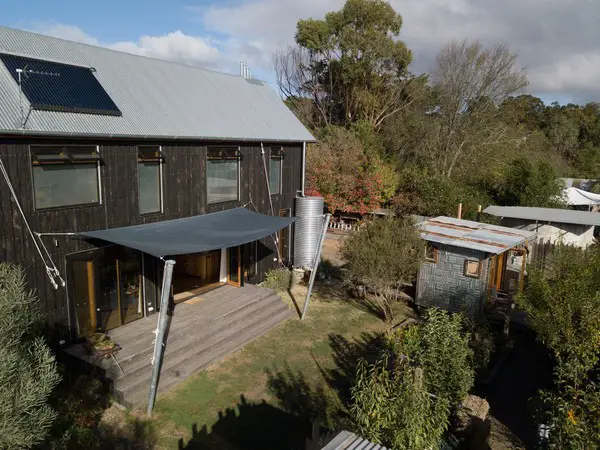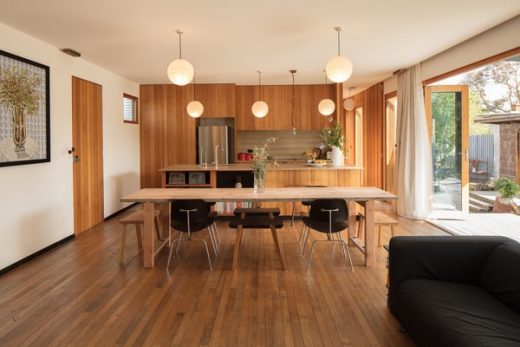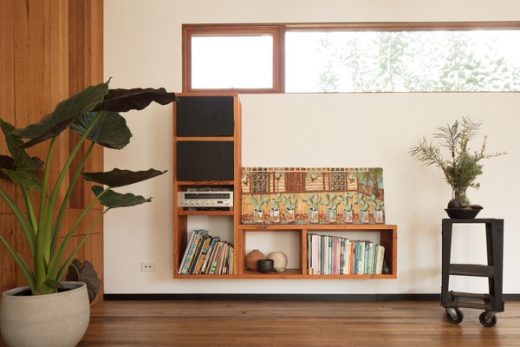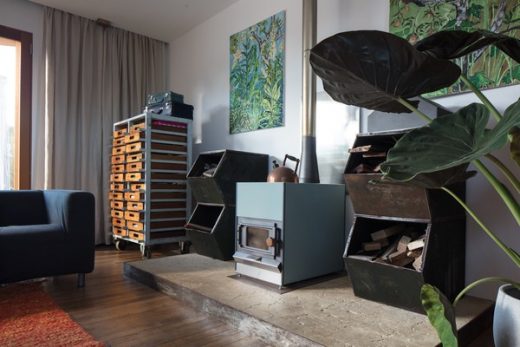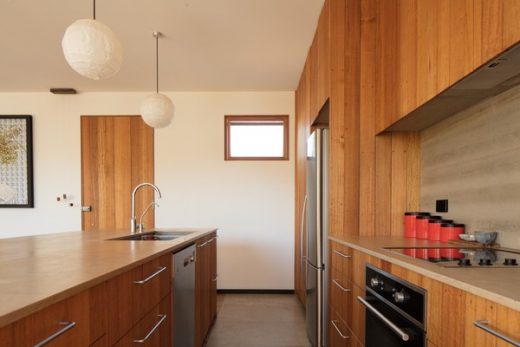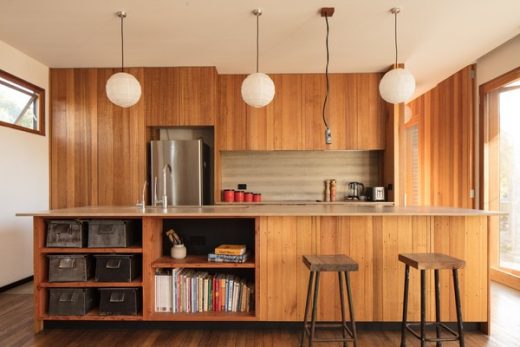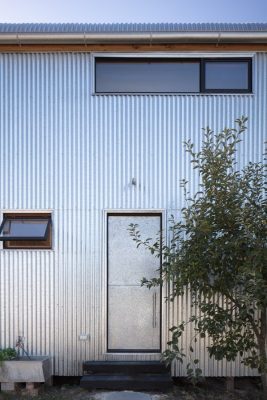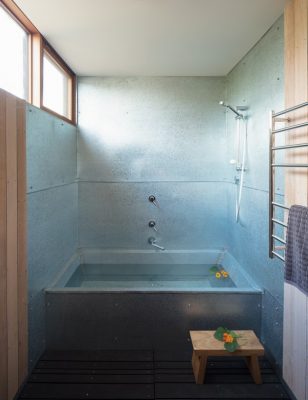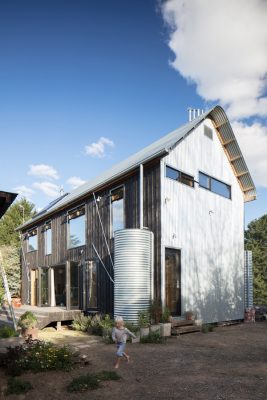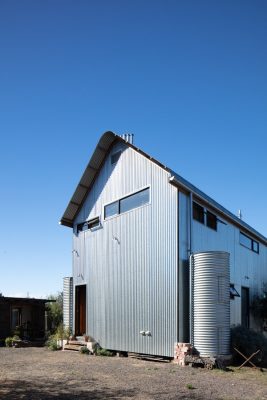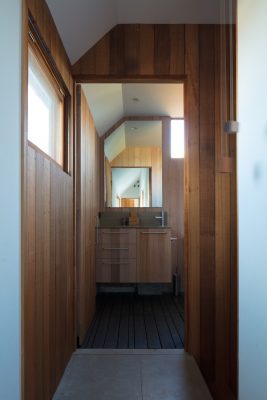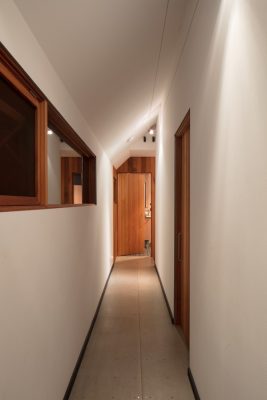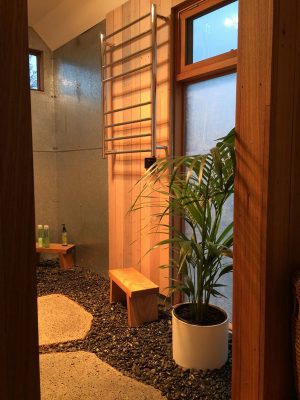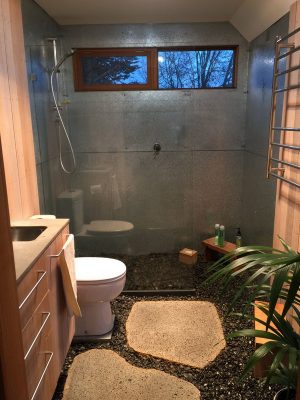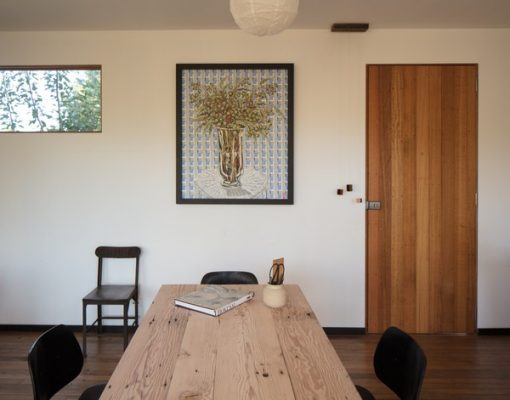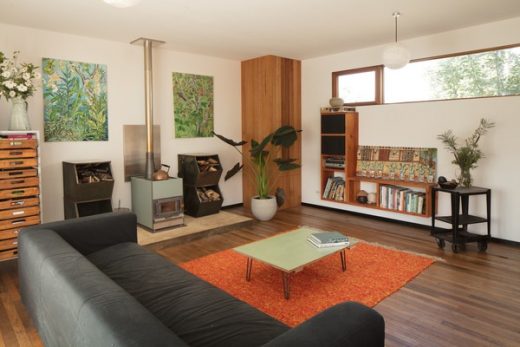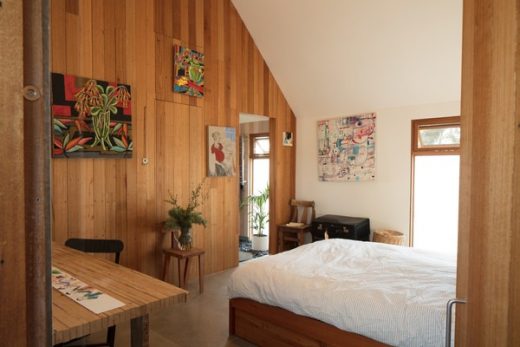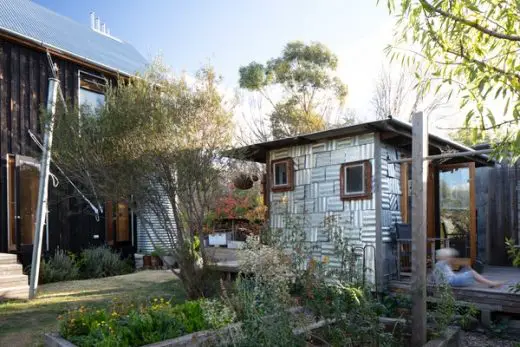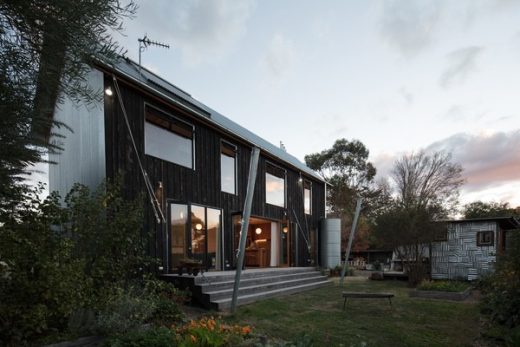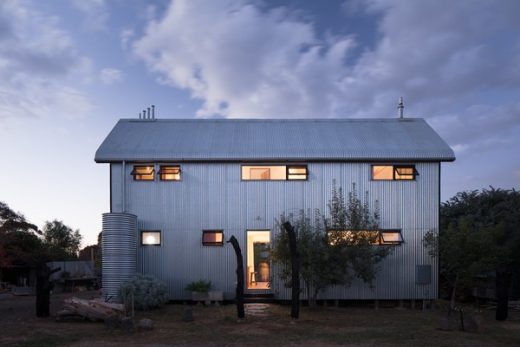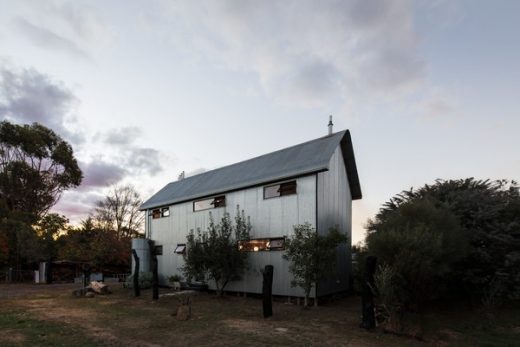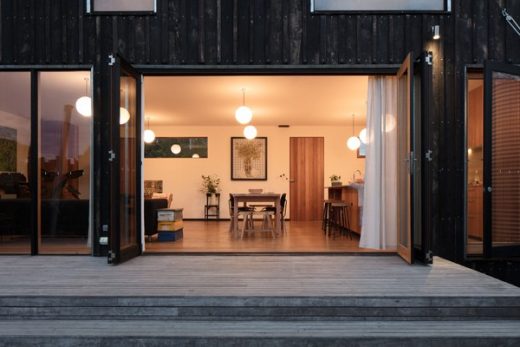The Recyclable House in Beaufort, Victoria Home Building, Australian Building Design, Australia, Images
The Recyclable House in Beaufort, Victoria
Australian Sustainable Real Estate Building Development – design by Inquire Invent Pty Ltd
30 Jul 2018
The Recyclable House
Design: Inquire Invent Pty Ltd
Location: Beaufort, Victoria, Australia
The Recyclable House
Completed in December 2015, The Recyclable House was designed and built by Quentin Irvine, Managing Director of Inquire Invent Pty Ltd. Aesthetic inspirations for the house were drawn from iconic Australian galvanised steel wool sheds, hand crafts and industria.
The striking external facade is exceptionally low maintenance and durable using Yakisugi, a traditional Japanese charred timber technique (manufactured by Inquire Invent Pty Ltd) on the north side and heritage Z600 galvanised steel across an unbroken ridgeline and three sides of the building.
The house was designed with passive heating and cooling in mind like most sustainable houses. What sets it apart is the use of experimental, closed loop (“cradle-to-cradle”) design and construction methodologies. The house is a cutting-edge example of design and construction for recyclability.
Although the components of this house are either biologically or technologically recyclable, it has been built to last and is of exceptionally high quality. The solar-passive and highly insulated design ensures warmth and comfort in Beaufort’s harsh winter.
Coupled with the super efficient Pyroclassic wood fire stove with wetback and a solar hot water system, the house is cozy even on the coldest days of the year. The one room width of the house enables cross flow ventilation and this coupled with first and second storey shade sails keeps it cool in summer.
Quentin took a variety of mainstream building techniques and tweaked them here and there to improve recyclability, thermal efficiency, building longevity and indoor air quality. This was an important design objective so that the design ideas would be readily replicable by the mainstream building industry.
Extensive research went into the design of the house for recyclability. The house is made of recyclable materials and is screwed and nailed together. Wherever glues/paints/sealants have been used they are natural and biodegradable in all but a very few instances.
A bi-product of designing a house built with natural materials and finishes for their recyclability and biodegradability is the sensational indoor air quality that follows. Therefore this design philosophy is also compatible for those afflicted with ‘sick building syndrome’ (SBS) / multiple chemical sensitivity (MCS) / people who are sensitive to environmental toxins.
Quentin Irvine’s Recyclable House is a positive example of how the building industry can address the urgent issue of waste reduction and whole of life cycle resource management. The houses’ practical utility and stylish appeal offer a successful narrative of design and construction that provides solutions for housing in a circular economy.
The Recyclable House – Beaufort is currently available for rent on Airbnb.
DESIGN EXPLANATION BY QUENTIN IRVINE (THE DESIGNER)
The design problem identified
Whilst learning the building profession I identified and became frustrated with the fact that most Australian homes are essentially built with/for rubbish whether they were promoted as eco friendly homes or not. Even though materials were often coming to site as quality recyclable materials, they would be destined for landfill the minute that they were installed due to the building practices and installation methods used.
I found solutions to many of these problems by researching older building methods as well as thinking creatively about the problem.
Thankfully due to the relatively slow progression of Australian Building Standards and the fact that they are often added to, instead of subtracted from, many of these older, more recycle friendly building methods are still regulation building practice.
Minimising embodied energy
The embodied energy of the building was considered as in most environmentally friendly buildings. However I did not let this get in the way of the closed loop design.
I think of embodied energy much like capital in economics. For example, using stainless steel for a floor tray in a bathroom, or aluminium as a door stop may be viewed as choices that are very high in embodied energy, but because these elements are used in a reusable way, I don’t see them being expended or spent in the building of the house, I see them as being invested.
In hundreds of years (hopefully) when the house is deconstructed, these elements will be recycled and can be resold at a handsome price because they will still hold all of their embodied energy, and can be easily recycled into other high value products.
Building with recycled materials
There are a number of recycled features in the house – mostly timber as floorboards, wall linings and joinery. Although the use of recycled wood is good as it lowers the embodied energy in the build, and is also good from the perspective of not consuming new forestry resources – the use of these materials is also where the closed loop design philosophy falls down.
This is because we don’t know where these materials have been and don’t know the content of the finishes used on them. Consequently we cannot determine how safe these would be for natural recycling through burning or composting without further analysis.
Sadly, I can almost guarantee that the finishes on much of the old floorboards would be in some way toxic, as for example lead was often used in clear coat timber finishes. We did our best to mitigate this problem by re-machining the recycled timber that was used in the house, and finishing it with natural oil finishes.
Documentation for future recycling
As illustrated in the previous discussion about timber for recyclability, documentation is critical to the ‘recyclability’ of The Recyclable House. Accurate records are required that identify the materials that went into the house as well as the construction methods used to assemble the house so that future generations can recycle the house, safely and efficiently. This is an issue that will need to be dealt with in a future that embraces a circular economy.
Walls so good you could eat them!
Well you wouldn’t just munch into a wall, but as they are fully compostable they could ultimately enter the food chain. By using the older style plaster board that was readily available in 2015, installing it without glue (screws only) and painting it with natural paint, (I mean natural paint, not low VOC acrylic/ plastic paint), you have a wall lining which is essentially: paper, gypsum and a few other inert ingredients.
Assuming that these materials are not contaminated down the track, you have a wall lining that can be composted and used as a soil improver. You then get to eat the walls when your crop sets!
A closed loop bathroom for the circular economy
How does one build a recyclable bathroom?
Most bathrooms start with tile substrates (chipboard or cement sheets) being glued and nailed to walls and floors, followed by waterproofing membranes and tiles being applied to these. At the end you have 4 or more different materials stuck together. Congratulations, you just created landfill. It might serve for a long while as a waterproof bathroom, but the tiles, cement sheet, chipboard, glue and chemical membrane have all started their slow but certain, one way trip to landfill.
We built our bathrooms, using similar techniques to roof building.
I first got the idea for this from an architect friend named Ann Cameron, and adapted it to make it as recyclable as possible.
We started with recyclable and partly recycled cement sheet that we screwed, not glued, to the floor structure. We then built waterproof, stainless steel floor trays/shower trays that had floor/shower wastes installed. These acted as the waterproofing layer (once again not glued down).
From here we used floating decking boards in one bathroom, and pebbles/ pavers in another. For a more conventional finish, you could use tiles on a sand/cement mortar bed for floors and still keep it fully recyclable.
Recyclable joinery
Joinery in modern construction can be a real problem for recyclability. Much of it actually gets delivered to the house as landfill! Largely melamine, paint or vinyl coated MDF/chipboard. There is no way to separate these materials again so that the wood chip content could be recycled naturally and the other components could be recycled back into PVC/petrochemicals etc…
To create a more durable yet entirely recyclable kitchen we used PureBond Plywood (which uses formaldehyde free soy-based glues), Plaspanel (recycled plastic panel), re-machined recycled timber dressed with natural oils and cement sheet. All of these materials are recyclable and they were all screwed together so that they could be easily disassembled for recycling.
Recyclable building envelope sealing
Building air tightness is all the rage at the moment, but to use a common Australian aluminium/plastic-foil building wrap and to fill every nook and cranny with an acrylic/ chemical filler and expanding polyurethane foam is not recyclable.
Instead of these unrecyclable wall wraps we used recyclable polyester breather wrap for wrapping the house walls. This is just as good for air tightness but is vapour permeable therefore keeping the wall cavities and the home dryer, mould free and healthier. It is like “Gortex” fabric for your home.
Instead of smearing filler and expander foams all over good recyclable timber, we used correctly installed flashings and correctly lapped and stapled wall wrap to keep things as air tight as possible. We then used rock wool insulation to fill any remaining tricky gaps.
The light switches
The idea of using pull lights in a building arose when I was designing a straw bale art studio and gallery. It is entirely possible to install ordinary light switches into a straw bale wall, but it’s a slightly less elegant install compared to that in a timber-framed wall.
Pull lights save on pvc and copper in many instances as electrical cable doesn’t have to run down the wall to the switch. A linen pull cord is far lower in embodied energy than pvc/ copper wires. I love the look of pull cords, and I can’t help but get excited by all of the playful aesthetic details that can follow. Think cord material/ colour and types of pull that could be attached.
External Finishes / Materials
Fortunately my design aesthetic is readily compatible with closed loop options for external cladding. The weatherboard-clad home seen so often in the Australian home design landscape, is a curse on any sensible homeowner. Traditional painted timber weatherboards have extremely low longevity and are unrecyclable due to the painting. The modern cement sheet and Masonite counterparts are a longer lasting solution but are still not fully recyclable due to the paint.
I chose Z600 galvanised corrugated steel as the predominant external cladding primarily for its superior durability and recyclability, but also as an aesthetic homage to the iconic Australian woolshed. I also chose galvanised steel as opposed to zinc/aluminium coated steel as I believe it’s a safer surface to collect drinking water from.
To break up the austerity of the external façade we experimented with charring our own Australian, locally milled timber for the north-facing façade. Yakisugi, (charred timber) a Japanese cladding technique has been used in Japan for hundreds of years, due to the processes’ multiple benefits – fire retarding, rot resistant, carbon sequestering, fully recyclable, and extremely low maintenance.
The Yakisugi burning process also utilised the offcuts from installation of the charred cladding as a fuel source for manufacturing the product. This provides an example of the potential for closed loop manufacturing systems using this material.
ABOUT QUENTIN THE OWNER/ DESIGNER AND THE HISTORY OF THE HOME
I have been tinkering, designing and making as far back as I can remember. I am an engineer and registered domestic builder. I used to work as an electronic engineer, designing and writing software for a solar power inverter company (Selectronic).
During this time I was always very actively designing and making eco friendly objects in my home time, at first from recycled objects, but soon shifted to design for recyclability. I mostly worked in timber, aluminium and sewn mediums, largely designing bags, shoes and furniture. I then left my engineering career to pursue the design and construction of recyclable, efficient, attractive and superlatively comfortable homes.
I’m one of these people who, from a very young age, always wanted to own my own home or at least my own space to be in. Since my university days I have been a big advocate of high-density nodes connected by rail as a preferred town planning architecture. Therefore, when an opportunity came up 9 years ago to buy a subdividable block close to a train station in sunny/ frosty Beaufort I jumped at it.
I built a tiny shed on the block straight away and subdivided the back off the block as quickly as I could. We used to go camping on the block every month or so. Cooking on a campfire and outdoor showers were the order of the day. The shed I had built was only just big enough to fit a bed and some standing space (you can see it in the photos).
At first it was just Katherine (my partner) and I, but then we had one child (Amelie) and then another (Louis). We continued to go up to Beaufort to camp, with 4 of us head to toe in a queen size bed! I loved it! I still miss those days, just enjoying the simple life.
I was originally looking to build a shed as a studio/ creative space. I have always loved designing and making things, and needed more space to create.
Once I had a family to think about, the vision changed, and a small house/creative space turned into a moderate family home. From that point our mandate transformed into creating a comfortable ‘closed loop’ family home that any contemporary family could enjoy living and growing in. I wanted to showcase how adapting regular building methods could create a conventional house built for recyclability and a future circular economy.
The Recyclable House – Building Information
Project size: 152 sqm
Site size: 573 sqm
Project Budget: $380,000
Completion date: 2016
Building levels: 2
Photography: Nic Granleese and Inquire Invent Pty Ltd
The Recyclable House in Beaufort images / information received 300718
Location: Beaufort, Victoria, Australia
Melbourne Architecture
Melbourne Architecture
New Melbourne Buildings : current, chronological list
Melbourne Architectural Tours by e-architect
Melbourne Properties
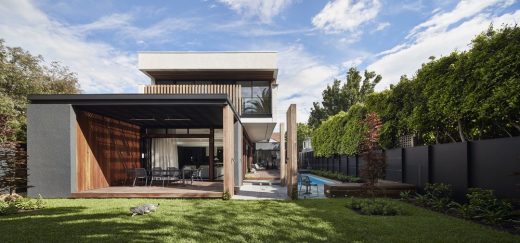
photograph : Peter Bennetts
Design: McGann Architects
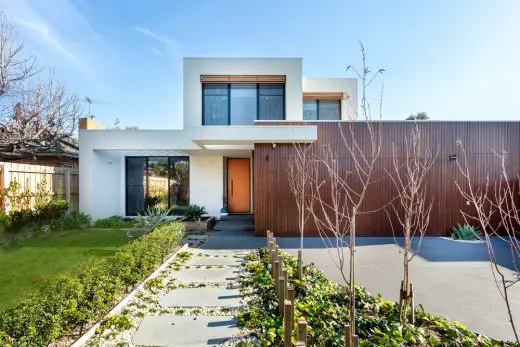
photograph : The Space Cowboy Photography
Thompson Home
Design: MODO Architecture
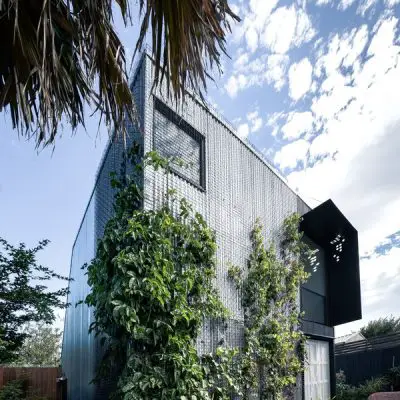
photograph : MODO Architecture
Garden Studio in Moonee Ponds
Architecture in Australia
Contemporary Australian Architectural Projects
Sydney Architect Studios – design studio listings on e-architect
Comments / photos for the The Recyclable House in Beaufort – page welcome
Website: Inquire Invent Pty Ltd

